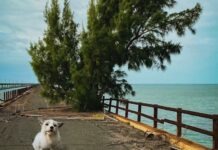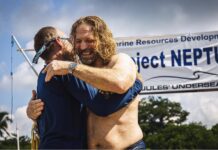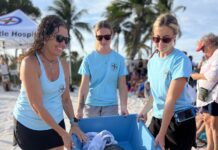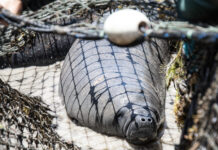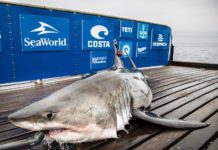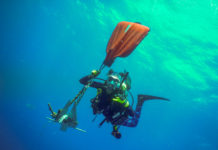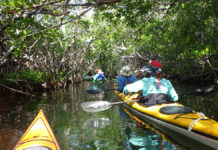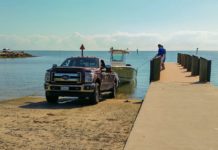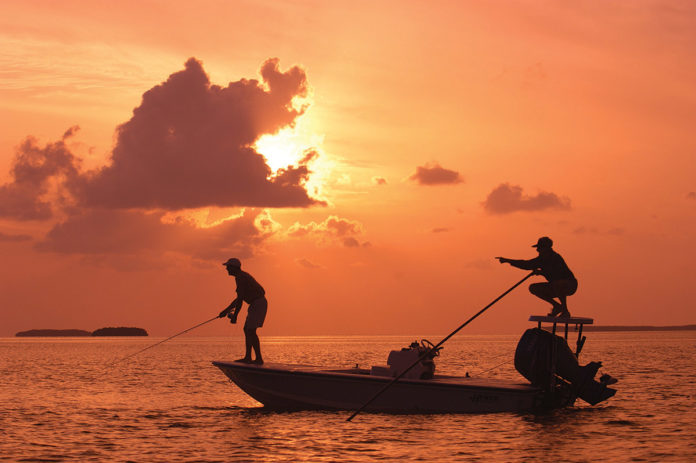
Record numbers of Keys’ visitors and an explosion of new boaters and Jet Skiers, unfamiliar with navigating our shallow waters, are wreaking havoc on vital flats habitats. The same “newbies” are all too often unaware of on-the-water etiquette, right of way rules, and navigation markers also creating safety issues while simultaneously infuriating anglers, divers, snorkelers and other veteran boaters. Better boating education and a healthy dose of courtesy are absolutely necessary to cure a growing problem.
Our aquatic habitats are unique. The Keys are perched on ancient coral reefs and countless banks and seagrass flats create highly productive shallow water habitats for myriad species. Healthy flats are irreplaceable nurseries for juvenile snappers, forage fish, conchs, lobsters, and blue and stone crabs in addition to high-profile species like bonefish, permit and tarpon. The federal and state governments recognize the value of these habitats via an array of special land and water designations to conserve and protect them: national parks (Florida Bay and Dry Tortugas), national wildlife refuges, national marine sanctuary, Florida Area of Critical Concern, and multiple state parks and preserves.
Saving the flats isn’t just environmentalism – it’s good business. Fishing the flats for bonefish, permit and tarpon (and its 99% catch and release) brings over $450 million annually into the Keys. And the value provided via commercial fishing, other recreational fishing, and diving and snorkeling tops $1 billion. Destruction of nursery habitats for fish, lobsters and crabs threatens these sustainable local industries.
Yet every day on the water reveals unparalleled adverse impacts on shallow water habitats caused by boaters and Jet Skiers who are apparently clueless about the need to avoid such waters. Groundings on banks and flats are a daily occurrence. Boats and Jet Skis running too shallow chew up the sea grass, churn up long mud trails, and turn clear waters into a murky mess. Propeller scars proliferate daily, criss-cross every nearshore flat from Key Largo to Key West and take years to heal. Rental vessels – boats and Jet Skis – are major culprits.
Besides this environmental carnage, the lack of courtesy and etiquette is almost as infuriating. A flats fisher spends 20 minutes silently poling a skiff onto a flat in search of shy bonefish, only to be overrun by half a dozen Jet Skis churning by in 12 inches of water. Adios, bonefish. Or a set of boats are staked out in a few feet of water waiting for the migrating tarpon to swim by. Into their midst comes a boat that treats the anglers like slalom poles on a ski course and runs an “S,” frightening away any tarpon in the neighborhood. Flats anglers (usually in small skiffs with an angler standing on the bow and a guide standing on the stern poling platform) are hunting for swimming fish, not just dropping a baited hook next to the boat. Courtesy means determining which way the distinctive flats boat is moving, or looking, and simply choosing to not run in front of them. If you see two or three such boats in a line this time of the year, you can bet the tarpon are swimming a line that connects them – simply stay a few hundred yards outside (or inside) that line. I know too the diving/snorkeling community can chime in with plenty of horror stories about vessel operators who simply ignore dive flags putting people in danger.
Boat and Jet Ski rental businesses must get aggressive in providing better education about avoiding our shallows. Driving home that a vessel should not be run where there are wading birds, or make the renter repeat the mantra “brown, brown run around” (or aground) should help. Throwing in “red right returning” wouldn’t hurt either – we see plenty of boats trying to run on the wrong side of channel markers with predictably bad results. Emphasizing that running in a straight line from A to B rarely works here and it is essential to consult a good chart or the GPS to figure out how to get into, or out of, marked channels are other crucial facts. And when a mistake happens, stop the boat and try to gently back off or out of the shallows; the normal response appears to be more power which makes matters worse. Add rigorous enforcement of Florida’s boater education requirement (which should be expanded to everyone, not just those born since 1988) and things might get better. Similarly, providing the renters with some information about giving anglers some room AND avoiding boats flying dive flags should be mandatory.
Reaching the renters is easy; the rental companies just need to step up in the interests of the environment (and the broader community). Dealing with the visitors from farther up U.S. 1, who bring their own boats, is harder. A blanket boater education/license requirement makes the most sense. In fact, Everglades National Park has blazed this path, mandating that anyone operating a boat within Florida Bay must pass an on-line boater ed course and carry the “I Passed” certificate. If such a common-sense rule is in place for the Bay, shouldn’t a similar rule in place for the marine sanctuary, the wildlife refuge waters, and the state’s Area of Critical Concern?
We recently celebrated the 51st anniversary of Earth Day. For the first one in 1970, the then-celebrated cartoon “Pogo” depicted its character observing, “we have met the enemy and he is us.” The Keys’ shallow water habitats are on the verge of being loved to death by a lot of people new to our waters. A bit of education and etiquette can go a long way toward conservation and harmony.
— Marathon resident Bill Horn has been visiting, fishing or living in the Keys for 60 years. He was assistant secretary of the interior for fish & wildlife under President Reagan, served on multiple National Academy of Sciences environmental committees, and is author of “Seasons on the Flats: An Angler’s Year in the Florida Keys.”














